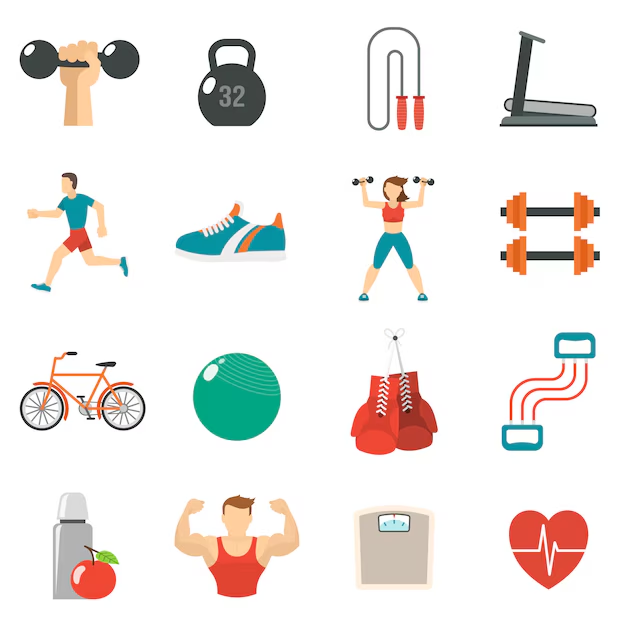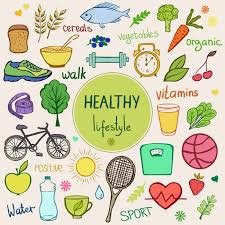Safeguarding Your Athletic Journey: 15 Proven Strategies to Prevent Sports Injuries
The exhilaration of competition, the bonds of teamwork, the pure joy of movement—sports offer unparalleled benefits. However, the risk of injury is a significant consideration. This comprehensive guide, from AckySHINE, a leader in sports injury prevention, presents fifteen essential strategies to prioritize safety and maximize enjoyment in your chosen sport. Let's explore how to minimize risk and optimize performance, whether you're on the field, court, or track. A proactive approach is paramount; it's not just about reacting to pain but anticipating and mitigating potential risks. This holistic strategy encompasses preparation, execution, and recovery, empowering you with the knowledge and tools for a confident athletic journey.
Investing in injury prevention translates to a longer, more fulfilling athletic career. By understanding and implementing these strategies, athletes of all levels can significantly reduce their risk of injury and maintain peak performance. This proactive approach fosters a positive feedback loop, allowing for consistent training and progress without the setbacks caused by preventable injuries.
15 Pillars of Injury Prevention: A Practical Guide
- Warm-up: Preparing Your Body for Action: A proper warm-up is non-negotiable. Dedicate ample time before each activity to dynamic stretching (movements mimicking the sport's actions) and light cardio. This crucial step prepares muscles and joints, significantly reducing the risk of strains and pulls. Think of it as priming your engine for peak performance.
- Protective Gear: Your First Line of Defense Against Injury: Appropriate protective equipment is essential. Helmets, shin guards, mouthguards, and other safety gear are designed to mitigate severe injuries. Always use them according to your sport's guidelines and safety recommendations. Never compromise safety for convenience.
- Equipment Maintenance: A Foundation for Safe Performance: Regularly inspect and maintain your equipment (rackets, balls, cleats, etc.). Ensure it's in optimal condition and suitable for your skill level and the sport. Damaged or unsuitable equipment dramatically increases the risk of accidents and injuries. Regular maintenance is an investment in your safety.
- Mastering Technique: Precision for Protection: Correct technique is paramount. Invest time in learning and refining proper movements for your sport. Precise technique minimizes strain, reducing the likelihood of sprains, tears, and other common injuries. Consider seeking coaching or instruction to refine your technique.
- Listen to Your Body: Recognizing Pain's Warning Signals: Pain is a crucial warning sign. Pay close attention to any discomfort during activity. Ignoring pain can lead to more severe, long-term injuries. Rest, recover, and consult a healthcare professional if needed. Your body provides valuable feedback; learn to interpret it.
- Avoiding Overexertion: Gradual Progression, Not Reckless Pushing: Pushing your limits is vital for improvement, but overexertion leads to fatigue and dramatically increases injury susceptibility. Gradual progression is key. Know your limits and avoid pushing too hard, especially when starting a new program. Progress steadily, not abruptly.
- Hydration: Fueling Performance and Preventing Injury: Dehydration significantly impairs performance and increases the risk of cramps, heat exhaustion, and other heat-related injuries. Maintain consistent hydration by drinking plenty of water before, during, and after activity. Hydration is fundamental to optimal performance and injury prevention.
- Rest and Recovery: Essential for Muscle Repair and Injury Prevention: Adequate rest is crucial for muscle repair and injury prevention. Avoid overtraining. Integrate rest days into your training schedule to facilitate proper bodily recovery and prevent burnout. Rest is not laziness; it's a vital component of training.
- Nutrition: Building a Resilient Body Through Diet: A balanced diet fuels optimal performance and injury prevention. Prioritize nutrient-rich foods to provide energy and building blocks for muscle growth and repair. Consult a registered dietitian for personalized guidance. Fuel your body correctly for peak performance and recovery.
- Cross-Training: Expanding Your Athletic Capabilities: Diversify your workouts! Engage in various sports or activities. Cross-training enhances overall fitness, reduces overuse injuries from repetitive movements, and improves overall athleticism. Variety strengthens and protects your body.
- Environment Awareness: Assessing the Playing Field: Always thoroughly assess the playing surface. Uneven ground, obstacles, and poor conditions increase fall and injury risks. Choose suitable footwear and be mindful of your surroundings. Awareness of your environment is crucial for safety.
- Rules Compliance: Safety and Fair Play Go Hand in Hand: Adhering to your sport's rules is crucial for fair play and safety. Rules are designed to minimize risks and protect athletes from injury. Respect the rules for your safety and that of your fellow athletes.
- Pre-Participation Physical: A Proactive Health Check: Before starting a new sport or intense training, consult your doctor for a pre-participation physical. This ensures you're physically fit and helps identify potential health concerns. A proactive health check can prevent future problems.
- Cool-Down: The Crucial Recovery Phase: Cooling down after intense activity is as crucial as warming up. Gentle stretching and low-intensity exercises aid recovery, reduce muscle soreness, and prevent stiffness. Proper cool-down aids recovery and injury prevention.
- Professional Medical Attention: When to Seek Help: For significant injuries or persistent pain, promptly seek medical attention. A sports medicine specialist can diagnose the injury and recommend an appropriate treatment plan for optimal recovery. Don't delay seeking medical help for significant injuries.
By diligently applying these fifteen strategies, you can significantly reduce your risk of sports injuries and fully enjoy your athletic pursuits. Remember, safety always precedes performance. Prioritize these preventative measures for a safe and rewarding athletic experience! Your commitment to prevention will lead to a longer, more fulfilling athletic career.
Share your injury prevention tips and experiences in the comments below. Let's create a supportive community dedicated to safe and fulfilling sports participation!





